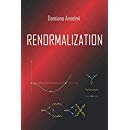Central functions $c(g)$ and $c'(g)$ are constructed in quantum field theory. These quantities justify and generalize the notions of central charges recently introduced at criticality, which, together with suitable anomalous dimensions $h$, identify a conformal field theory in four dimensions (CFT$_4$). They are encoded in the four-point function of the stress-energy tensors. The behavior of the central functions is analysed to two-loops in perturbation theory. The central function is the fundamental notion for a description of quantum field theory as a radiative interpolation between pairs of CFT$_4$’s. The problem of computating their RG flow in the far IR limit starting from the UV fixed point is addressed in the context of supersymmetric gauge theories and electric-magnetic duality.
JHEP 9805:005 (1998) | DOI: 10.1088/1126-6708/1998/05/005
Certain topological invariants of the moduli space of gravitational instantons are defined and studied. Several amplitudes of two and four dimensional topological gravity are computed. A notion of puncture in four dimensions, that is particularly meaningful in the class of Weyl instantons, is introduced. The topological embedding, a theoretical framework for constructing physical amplitudes that are well-defined order by order in perturbation theory around instantons, is explicitly applied to the computation of the correlation functions of Dirac fermions in a punctured gravitational background, as well as to the most general QED and QCD amplitude. Various alternatives are worked out, discussed and compared. The quantum background affects the propagation by generating a certain effective “quantum” metric. The topological embedding could represent a new chapter of quantum field theory.
Class.Quant.Grav. 14 (1997) 2031-2047 | DOI: 10.1088/0264-9381/14/8/006
With the perspective of looking for experimentally detectable physical applications of the so-called topological embedding, a procedure recently proposed by the author for quantizing a field theory around a non-discrete space of classical minima (instantons, for example), the physical implications are discussed in a “theoretical” framework, the ideas are collected in a simple logical scheme and the topological version of the Ginzburg-Landau theory of superconductivity is solved in the intermediate situation between type I and type II superconductors.
Class.Quant.Grav. 14 (1997) 1015-1036 | DOI: 10.1088/0264-9381/14/5/010
Topological Yang-Mills theory with the Belavin-Polyakov-Schwarz-Tyupkin $SU(2)$ instanton is solved completely, revealing an underlying multi-link intersection theory. Link invariants are also shown to survive the coupling to a certain kind of matter (hyperinstantons). The physical relevance of topological field theory and its invariants is discovered. By embedding topological Yang-Mills theory into pure Yang-Mills theory, it is shown that the topological version TQFT of a quantum field theory QFT allows us to formulate consistently the perturbative expansion of QFT in the topologically nontrivial sectors. In particular, TQFT classifies the set of good measures over the instanton moduli space and solves the inconsistency problems of the previous approaches. The qualitatively new physical implications are pointed out. Link numbers in QCD are related to a non abelian analogoue of the Aharonov-Bohm effect.
Class.Quant.Grav. 14 (1997) 1-20 | DOI: 10.1088/0264-9381/14/1/005
I develop a formalism for solving topological field theories explicitly, in the case when the explicit expression of the instantons is known. I solve topological Yang-Mills theory with the $k=1$ Belavin et al. instanton and topological gravity with the Eguchi-Hanson instanton. It turns out that naively empty theories are indeed nontrivial. Many unexpected interesting hidden quantities (punctures, contact terms, nonperturbative anomalies with or without gravity) are revealed. Topological Yang-Mills theory with $G=SU(2)$ is not just Donaldson theory, but contains a certain link theory. Indeed, local and non-local observables have the property of marking cycles. From topological gravity one learns that an object can be considered BRST exact only if it is so all over the moduli space $M$, boundary included. Being BRST exact in any interior point of M is not sufficient to make an amplitude vanish. Presumably, recursion relations and hierarchies can be found to solve topological field theories in four dimensions, in particular topological Yang-Mills theory with $G=SU(2)$ on $R^4$ and topological gravity on ALE manifolds.
Nucl.Phys. B439 (1995) 617-649 | DOI: 10.1016/0550-3213(95)00024-M
We go on in the program of investigating the removal of divergences of a generical quantum gauge field theory, in the context of the Batalin-Vilkovisky formalism. We extend to open gauge-algebrae a recently formulated algorithm, based on redefinitions $\delta\lambda$ of the parameters $\lambda$ of the classical Lagrangian and canonical transformations, by generalizing a well-known conjecture on the form of the divergent terms. We also show that it is possible to reach a complete control on the effects of the subtraction algorithm on the space $M_{gf}$ of the gauge-fixing parameters. A principal fiber bundle $E \rightarrow M_{gf}$ with a connection $\omega_1$ is defined, such that the canonical transformations are gauge transformations for $\omega_1$. This provides an intuitive geometrical description of the fact the on shell physical amplitudes cannot depend on $M_{gf}$. A geometrical description of the effect of the subtraction algorithm on the space $M_{ph}$ of the physical parameters lambda is also proposed. At the end, the full subtraction algorithm can be described as a series of diffeomorphisms on $M_{ph}$, orthogonal to $M_{gf}$ (under which the action transforms as a scalar), and gauge transformations on $E$. In this geometrical context, a suitable concept of predictivity is formulated. We give some examples of (unphysical) toy models that satisfy this requirement, though being neither power counting renormalizable, nor finite.
Class.Quant.Grav. 12 (1995) 319-350 | DOI: 10.1088/0264-9381/12/2/005
We consider the problem of removing the divergences in an arbitrary gauge-field theory (possibly nonrenormalizable). We show that this can be achieved by performing, order by order in the loop expansion, a redefinition of some parameters (possibly infinitely many) and a canonical transformation (in the sense of Batalin and Vilkovisky) of fields and BRS sources. Gauge-invariance is turned into a suitable quantum generalization of BRS-invariance. We define quantum observables and study their properties. We apply the result to renormalizable gauge-field theories that are gauge-fixed with a nonrenormalizable gauge-fixing and prove that their predictivity is retained. A corollary is that topological field theories are predictive. Analogies and differences with the formalisms of classical and quantum mechanics are pointed out.
Class.Quant.Grav. 11 (1994) 2181-2204 | DOI: 10.1088/0264-9381/11/9/005
We study a regularization of the Pauli-Villars kind of the one loop gravitational divergences in any dimension. The Pauli-Villars fields are massive particles coupled to gravity in a covariant and nonminimal way, namely one real tensor and one complex vector. The gauge is fixed by means of the unusual gauge-fixing that gives the same effective action as in the context of the background field method. Indeed, with the background field method it is simple to see that the regularization effectively works. On the other hand, we show that in the usual formalism (non background) the regularization cannot work with each gauge-fixing.In particular, it does not work with the usual one. Moreover, we show that, under a suitable choice of the Pauli-Villars coefficients, the terms divergent in the Pauli-Villars masses can be corrected by the Pauli-Villars fields themselves. In dimension four, there is no need to add counterterms quadratic in the curvature tensor to the Einstein action (which would be equivalent to the introduction of new coupling constants). The technique also works when matter is coupled to gravity. We discuss the possible consequences of this approach, in particular the renormalization of Newton’s coupling constant and the appearance of two parameters in the effective action, that seem to have physical implications.
Phys.Rev. D48 (1993) 5751-5763 | DOI: 10.1103/PhysRevD.48.5751

 Quantum Gravity
Quantum Gravity 


